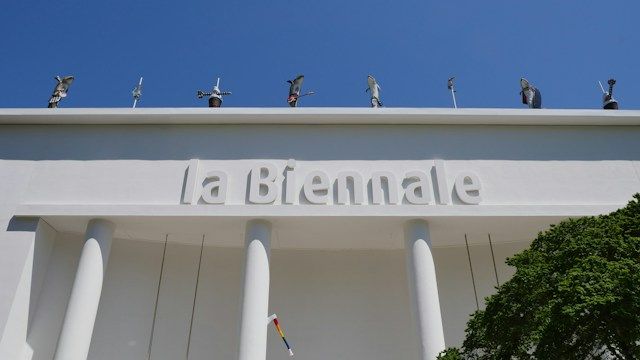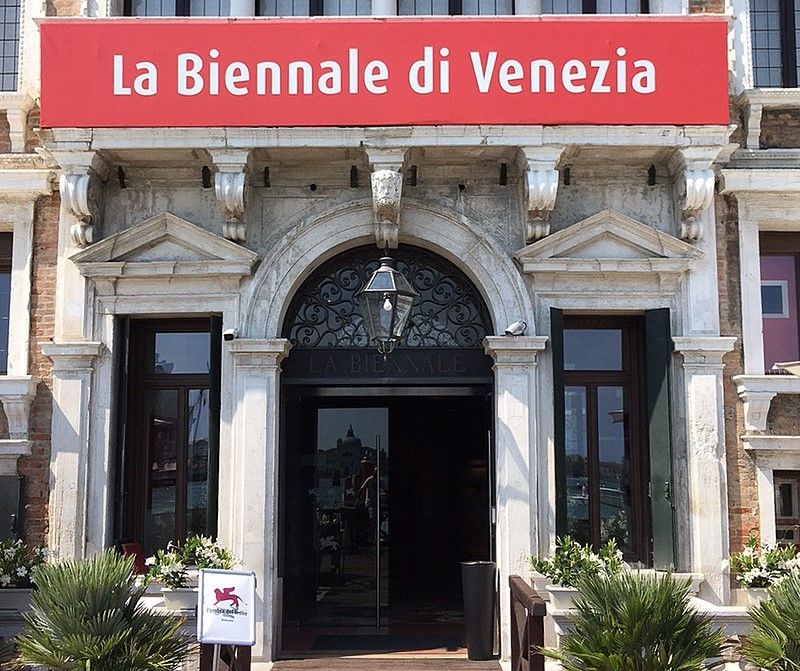If you are among those who wish to immerse yourself in the unique artistic atmosphere of the Venice Biennale 2024, you should definitely include the Arsenale Biennale Venice 2024 Visiting Route in your itinerary.
This year, the theme “Foreigners Everywhere” captures visitors' attention from the very beginning, with neon lighting marking the entrance to the Corderie dell'Arsenale.
Let's take a detailed look at the itinerary for visiting Arsenale at the Venice Biennale 2024
Route to visit Arsenale at the Venice Biennale 2024: Exploring the exhibition first

This year's exhibition focuses on foreign, immigrant, expatriate, diasporic, exiled or refugee artists, particularly those who navigate between the global South and North.
This exhibition offers an immersive experience due to the variety of works presented. From textile works to paintings, viewers can enjoy a wide range of art forms that tell unique and powerful stories.
A fluid Path of the Venice Biennale 2024
One of the most appreciated features of this Biennial is the arrangement of works along the walls, which allows visitors to more easily appreciate the artists' styles and intentions.
With a predominance of paintings and textile works over videos, visitors can move nimbly between rooms without prolonged interruptions, thus maintaining the flow of their artistic experience.
Artists not to be missed
Among the artists not to be missed is Pacita Abad, an artist-traveler who was born in the Philippines and has lived in 11 different countries.
Her textile works, made with the quilting technique, such as “At Guantanamo Bay (1994),” offer an intimate look at the migrants' wait behind the barbed wire of the borders.
Similarly, bark paintings by Aboriginal artist Naminapu Maymuru-White transport visitors to a world of symbolism and connection with nature.
A dialogue between culture and nature
Emmi White Horse, an indigenous Diné artist, captures attention with her oversize paintings that poetically depict landscapes of the Southwestern United States.
With the Diné/Navajo concept of Hózhó, meaning balance with nature, White Horse explores the wounds inflicted on the land by white settlers through an abstract and powerful artistic language.
Rewriting the artistic path
In this Biennale of Foreigners, the desire to overcome white privilege and an anti-colonial afflatus permeate not only the Arsenale of the Venice Biennale, but also numerous National Pavilions.
This spirit is tangibly reflected in the room dedicated to Marco Scotini's Disobedience Archive, an ambitious project that highlights the link between artistic practice, civil disobedience and political action.
The disobedience archive: A cultural revolution
The Disobedience Archive aims to be an atlas of contemporary resistance tactics, exploring from direct action to counter-information, from constituent practices to forms of bioresistance.
A traveling project, ongoing since 2005, it is enriched in this event with two new macro-sections: Diaspora Activism and Gender Disobedience.
The first addresses the issue of transnational migration in a context of neoliberal hegemony, proposing a critical reflection on the very concept of citizenship. The second is devoted to LGBTQ+ resistance movements around the world.
Works not to be missed
Among the works recommended for quick viewing are “Corpo Fechado” by Carlos Alejandro Motta, which tells the story of Jose Francisco Pereira, an 18th-century slave kidnapped in West Africa and sold to Brazil.
Other notable works include “Nunca seras un weye” by Seba Calfuqueo, “Desnudo bajando la escalera” by Pedro Lemebel and “Revolucion Puta” by Maria Galindo.
Art as a voice of resistance
Another tangible evidence of the anti-colonial struggle is the impressive sculpture by Maori artist Brett Graham. His work, depicting a huge wheelbarrow or pātaka covered with eels, symbolizes mobility and detachment from the homeland.
This sculpture, in addition to being an extraordinary work of art, also denounces the historical injustices perpetrated against the Maori people, highlighting how the New Zealand government of 1858 decreed as “waste” the swamp lands, which were rich in resources for the Maori, including eel reserves as valuable as gold mines.
Exploring the artistic dialogue
Frieda Toranzo Jaeger's impressive work, “Rage is a machine in times of senselessness,” represents a powerful anti-colonial message through a mixed media technique that blends oil painting and embroidery.
This project extends beyond traditional art boundaries, involving automobiles, embroidery traditions, wall painting and Western religious altars.
Francesca Bortolami, gallery owner, explains that the artist's interest in automobiles, particularly electric cars, stems from the perception of them as inherently feminine, inspiring utopian fantasies and offering a unique perspective on resistance to colonial legacies and gender discrimination.
Exploration of the theme of migration
In the room devoted to Boukhra Khalili's work, “The Mapping Journey Project,” the French-Moroccan artist offers an intimate and poignant view of the theme of migration.
Through videos projected on large screens, visitors are invited to follow the hands of a migrant as he traces the path of his own journey on a map of the world, while the narrative voice recounts the adventures and challenges associated with this experience.
This project brings to light the personal experiences of migrants, offering an authentic and human narrative that challenges common perceptions about migration.
The historical core italians everywhere
The Nucleo Storico Italiani Ovunque section offers a unique opportunity to explore the works of Italian artists who have traveled and lived abroad, contributing to the development of modern and local narratives.
Artists such as Maria Polo, Maria Bonomi, Eliseu Visconti, Libero Badíi, and Joseph Stella are brought together in this section, offering a diverse view of the Italian diaspora and its impact on global art.
The innovative display of works on Lina Bo Bardi's famous glass easels adds an iconic design element to this artistic exploration.
Celebrating diversity and inclusion
The 2024 Biennial of Foreigners stands out for its celebration of diversity and inclusion, offering significant space for queer people and outsiders.
Artists such as Xiyadie and La Chola Poblete bring forth a bold and vibrant dialogue through their works, challenging gender and social norms and offering a unique perspective on life and identity.
Xiyadie: A journey into Chinese Queer Life
Xiyadie, a farmer, migrant worker, homosexual, and artist, offers a poignant look at the evolution of queer life in China through his works of carving on paper.
Through works steeped in symbolism and repressed desire, Xiyadie offers a unique perspective on the struggle for acceptance and authenticity in a society that often denies them.
La Chola Poblete: Exploration of sexuality and identity
La Chola Poblete's vibrant watercolors are an ode to diversity and the fluidity of identity.
Through an undergrowth of hybrid figures and symbols, the South American artist invites us to explore the complexities of sexuality and identity, challenging social and cultural conventions with a touch of boldness and beauty.
Aravani Art Project: Embodying liberation
The Aravani Art Project collective, composed of cis and transgender women, brings forth a message of positivity and hope through their colorful murals.
With works such as “Diasporas,” the collective offers a vision of emancipation and freedom, symbolized by the figure of trans women immersed in nature and surrounded by flowers while holding an empty cage, representing liberation from constraints and oppression.
Beyond the boundaries of conventional art
The 2024 Foreigners' Biennial goes beyond the boundaries of conventional art, also celebrating self-taught and outsider artists.
The embroidered canvases of the Bordadoras de Isla Negra and the works of Santiago Yahuarcani and Rember Yahuarcani offer an authentic and powerful vision of human experience and connection to nature.
These artists, working on the margins of the art system, invite us to reflect on the complexity of our existence and our relationship with the world around us.

